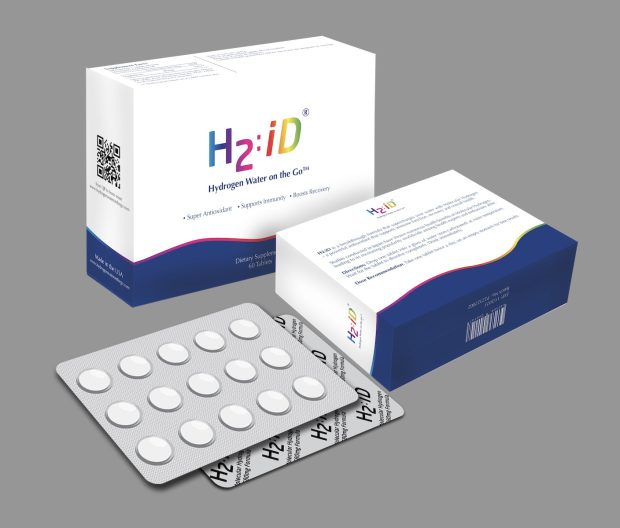As the digital world continues to expand and evolve, the need for stringent cybersecurity measures has become increasingly paramount. With the rise of cyberattacks, it has become crucial for organizations to take proactive steps towards protecting their networks, systems, and sensitive data. One such proactive measure is penetration testing. Penetration testing is a method of testing the security of a system or network by simulating an attack from a malicious actor.
By identifying vulnerabilities and weaknesses, penetration testing provides valuable insights into an organization’s security posture and helps them better understand the potential risks they face. The penetration tests assist in locating potential security holes in a system or network, enabling organizations to fortify their defenses against potential cyber threats. In this comprehensive guide, we will dive deep into the world of penetration testing, exploring the different types of tests, the tools and techniques used, and the benefits of implementing a robust testing program.
We will also discuss the challenges and considerations involved in conducting effective penetration tests, as well as the crucial role of ethical hacking and compliance in this process. This guide aims to provide organizations with the knowledge and skills they need to effectively identify and address security vulnerabilities.
Identifying potential security risks
One of the most important steps in conducting a successful penetration testing is identifying potential security risks within the target systems or networks. This involves a thorough examination of the target environment to identify any vulnerabilities that may be exploited by attackers. The process of identifying potential security risks involves a comprehensive analysis of the target system’s infrastructure, including its hardware and software components, network architecture, and security policies and procedures. It is imperative to understand that a penetration testing engagement can only be effective when potential security risks are identified and addressed, as this helps to reduce the likelihood of a successful cyber attack. Therefore, a thorough and systematic approach is required to ensure that all potential security risks are identified and appropriately addressed.
Assessing system vulnerabilities
Assessing system vulnerabilities is a critical component of a successful penetration testing strategy. Before attempting to exploit any weaknesses, it is essential to identify potential vulnerabilities within a system or network. This process often involves the use of automated tools or the use of manual processes, such as a penetration testing service, in order to assess the security systems posture and highlight areas of potential weakness which require improvements.
Automated vulnerability scanners can help identify known vulnerabilities quickly and efficiently, while manual testing techniques can uncover more complex vulnerabilities that may not be detectable with automated tools. It is essential to approach vulnerability assessment with a thorough understanding of the target environment, including its architecture, components, and potential attack vectors.
In addition to identifying vulnerabilities, it is equally important to prioritize them based on their potential impact on the target environment. This allows penetration testers to focus their efforts on critical vulnerabilities that could have significant consequences if exploited.
Overall, assessing system vulnerabilities is a crucial step in the penetration testing process. By identifying and prioritizing potential weaknesses, organizations can take proactive steps to improve their security posture and protect against potential cyber threats.
Simulating real-world attacks
In the field of penetration testing, simulating real-world attacks is a critical component of the testing process. The objective of this approach is to identify vulnerabilities that could be exploited by malicious hackers in the wild. By replicating the techniques and tools used by these malicious actors, penetration testers can gain valuable insights into the effectiveness of an organization’s security controls. This approach allows testers to identify weak points and potential attack vectors that may have been overlooked during traditional vulnerability assessments. Additionally, simulating real-world attacks helps organizations to understand the impact of a successful breach on their operations, reputation, and customers. Through this process, penetration testers can provide accurate and actionable recommendations to strengthen an organization’s security posture.
Evaluating overall security posture
In order to conduct a successful penetration testing, it is essential to evaluate the overall security posture of an organization. This involves taking a comprehensive inventory of all the assets and systems being used, identifying potential vulnerabilities and weaknesses, and assessing the level of security controls currently in place. By carefully analyzing the security posture, penetration testers can identify potential entry points for attackers and develop strategies to exploit them. This process should include a review of physical security measures, access controls, network security, application security, and data protection mechanisms. The aim is to provide a complete picture of an organization’s security posture, which can help in identifying gaps and making recommendations to improve security. Evaluating the overall security posture is an essential step in the penetration testing process, as it provides a basis for identifying vulnerabilities and developing appropriate recommendations.
Conducting network penetration testing
Conducting network penetration testing is an essential step in identifying vulnerabilities within an organization’s infrastructure. This process involves simulating an attack on the network to identify any weak points that can be exploited by cybercriminals. Penetration testers use a variety of tools and techniques to uncover these vulnerabilities and provide a comprehensive report detailing their findings. This report can then be used to prioritize and address the identified weaknesses.
When you undertake a service like Hummingbird Networks’ pen testing, it’ll simulate an attack on a system to identify potential vulnerabilities that could be exploited by malicious actors. This practice can also be known as ethical hacking for this reason.
It is important to note that penetration testing should only be conducted by experienced professionals who follow ethical guidelines and are authorized by the organization being tested. Failure to do so can result in damage to the network and legal consequences. Overall, conducting network penetration testing is critical in ensuring an organization’s security posture, and should be included as a regular part of any IT security program.
Testing web application security
When it comes to ensuring the security of web applications, testing for vulnerabilities is a crucial step. Penetration testing, also known as pen testing or ethical hacking, simulates an attack on a system to identify potential vulnerabilities that could be exploited by malicious actors. Within this process, testing web application security is a critical component. This involves evaluating the security measures in place to protect web applications from common threats such as SQL injection, cross-site scripting (XSS), and cross-site request forgery (CSRF), among others. By conducting thorough testing of web application security, organizations can identify weaknesses in their systems and take proactive steps to mitigate potential risks. This can help prevent data breaches, unauthorized access, and other security incidents that could have serious consequences for businesses and their customers.
Identifying areas for improvement
The identification of areas for improvement is a critical phase of penetration testing. It enables organizations to identify vulnerabilities in their security posture and take proactive measures to address them. During this phase, the penetration testing team will analyze the results of their testing and provide a detailed report outlining the identified vulnerabilities and potential attack vectors. This report will provide the organization with a roadmap for improving their security posture and mitigating the risks associated with these vulnerabilities. The identification of these vulnerabilities is not meant to assign blame or point fingers, but rather to highlight areas where improvements can be made to strengthen the organization’s security posture. Therefore, it is important to approach this phase of penetration testing with a constructive mindset and a willingness to make the necessary changes to improve security.
Maintaining ongoing security assessments
Maintaining ongoing security assessments is an essential component of any comprehensive penetration testing program. Regular security assessments help organizations to identify new vulnerabilities and weaknesses in their systems, applications, and infrastructure that may have been introduced due to changes in technology, personnel, or business processes. By conducting ongoing assessments, organizations can stay ahead of potential threats and keep their security posture strong. It is crucial to perform assessments on a regular basis to ensure that security measures are effective and remain up-to-date. Additionally, ongoing assessments provide valuable insights into the effectiveness of existing security controls and help organizations to identify areas for improvement. It is recommended that organizations conduct security assessments at least once a year, but the frequency of assessments may need to be increased depending on the organization’s risk profile and other factors.
Conclusion
Penetration testing is an essential tool for identifying vulnerabilities and improving the security of digital assets. By adopting a comprehensive approach that includes planning, execution, and reporting, organizations can gain valuable insights into their security posture and take proactive measures to protect against cyber threats. As the threat landscape evolves, it is crucial to stay abreast of the latest techniques and tools to ensure that security is a top priority. With the right strategy and expertise, businesses can reduce their risk exposure and build a strong defense against potential attackers.







